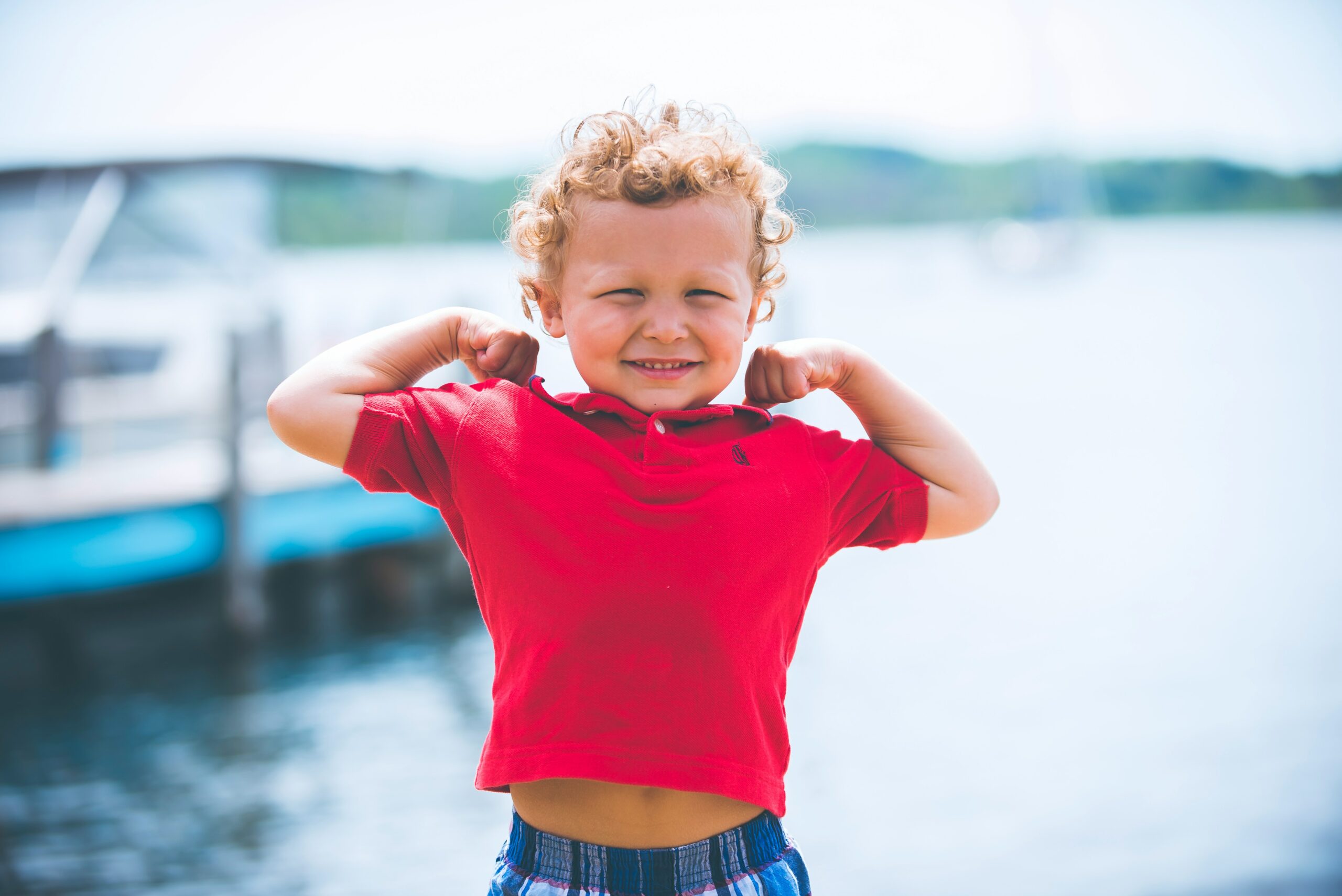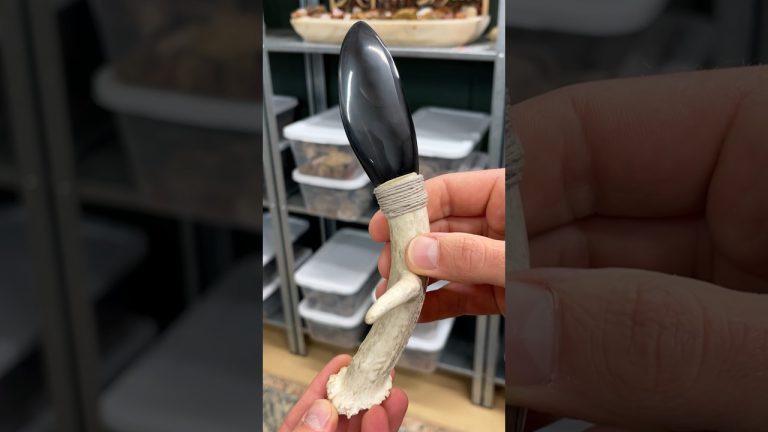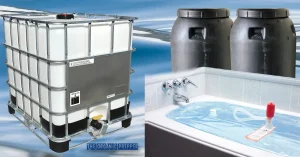One of the most critical uses of electricity is helping us stay cool in very hot weather. Our bodies can become quickly overheated. As a lifelong desert rat, here are a few tips for how to stay cool in the heat outside, or as cool as possible when summer heat soars.

Some of the links in this post may contain affiliate links for your convenience. As an Amazon Associate, I may earn a small commission from qualifying purchases without any increase in price to you.
Growing up in Phoenix, you would think I would have become accustomed to that city’s God-awful heat, but the truth is, I never did. Instead, every single summer, I found myself hunkering down indoors and scurrying from one air-conditioned building to the next.
After I married and had kids, I noticed how quickly my kids over-heated when they played outdoors and began learning how to mitigate the effects of heat while enjoying school-free days.
A heat wave is about as predictable in the summer as the presence of watermelon at farmer’s markets. However, if you live in an area that doesn’t usually experience high temperatures, you may find yourself and your family in danger of heatstroke. The Pacific Northwest, for example, experienced this in 2021 when a heat dome settled over the region, and temperatures soared. The pavement buckled, and streetcar cables melted.
One town reached 117 degrees, tying Las Vegas’ all-time high and claiming the dubious honor of being the hottest city in the country that day, hotter even than Phoenix. Imagine how the people felt, unused as they are to that extreme.
From a lifelong desert rat, I have a few tips for how to stay cool in the heat, or as cool as possible, when summer heat soars, whatever region of the country or world you live in.
Tips for Staying Cool When the Temperature Soars
- Make ample use of every type of fan you own. Ceiling fans are a must. Just be sure the fan blades turn in the direction that blows the air downward. Most have a switch to flip to change the oscillation direction if needed. Also, turn off your fans when you leave home. Circulating air is meant to help keep your body cool. When no one is in the room, electricity is being wasted. This is especially important if brownouts or blackouts are a concern.
- If your home or apartment doesn’t have air conditioning, keep spray bottles filled with water handy. It’s incredible how a spritz of water on your face and wrists help you feel cooler.
- If the mornings are cool and you don’t have humidity, open all your windows, let that cool airflow through your home, and then close them up as soon as the heat sets in. At that point, close your curtains, shades, or shutters. I love a bright, sunlit home, but this works for me in the summer.
- Here’s an old trick I learned when I lived on a kibbutz. Just before bedtime, spray bed sheets with plenty of water and aim a battery-powered fan toward your side of the bed. Then, jump in, and go to sleep quickly!
- Wear bathing suits around the house. Then, for extra cooling, get it wet.
- Wet a bandanna, place a few ice cubes down the center, diagonally roll it up, and tie it around your neck. Commercial products do the same job, like this one, if you don’t have ice or it gets too messy.
- Check doors and windows for incoming warm air and install weather-stripping if necessary. This does double duty in the winter when cold air is the enemy. Duct tape can substitute for weatherstripping if you’re desperate.
- Check the western exposure of your home. If you have windows that face west, check into inexpensive blinds from Home Depot or Lowe’s. Even aluminum foil taped over your windows (gasp!) can help keep your home cooler. Sheets of bubble wrap are another option.
- Perform outside chores in the morning when the sun rises or even earlier. Take frequent breaks, and drink plenty of water.
- If you must, douse your naked body with water and stand in front of a battery-operated fan. Stock up on these fans and make sure you have plenty of batteries—and please close the blinds!
- Take a slightly warm bath, as long as there is water in the water heater. It will lower your body temperature, making you feel cooler longer once you get out of the tub.
- Go barefoot.
- Drink those eight glasses of water daily, and ensure every family member remains hydrated. This is particularly important for babies, toddlers, the elderly, and anyone with chronic health issues. Because water is essential when it is hot, ensure you have plenty on hand. Please read about the various ways to store water.
- Plant fast-growing shade trees, particularly on the west side of your home. If they provide shade for outside windows, so much the better. Shade = cool. Ask a local nursery with well-trained employees what shade plants/trees grow the fastest in your region.
- Most of the hot air that enters your home comes through the windows. Thermal curtains may be the solution if your home has lots of windows. If that’s not an option, try using pushpins to hang blankets over each window.
- If you long to be outdoors, fill a kiddie pool with water, sit down, and relax. Be sure to wear sunscreen! When the water gets too warm to enjoy, use it to water the plants. No kiddie pool? See #18.
- Don’t overexert yourself. Avoid working up a sweat, if possible. Also, save physical labor for the cooler parts of the day. Take a lesson from desert animals: They rest in the shade or underground during the day and come out at night.
- Fill a pan or small tub with a few inches of water and dangle your feet in it while you read a book.
- Cover furniture with cool cotton sheets.
- Use other people’s air conditioning! A few summers ago, when our house was being renovated, the kids and I spent dozens of hours at the library, Chick-fil-A, and Starbucks (they both have Wi-Fi!). Sometimes we’d go to the mall, but that was too dangerous for our budget. If you have friends and family who enjoy your company, pay them a visit.
- Watch the landscape workers in your town. You’ll find they always wear wide-brimmed hats, long-sleeved shirts, and long pants. This is because they know what they’re doing. It sounds counter-intuitive, but that extra fabric protects your skin from the sun.
IMPORTANT: Young children and the elderly are more susceptible to heatstroke. Please pay careful attention to their needs. Teach children to be self-aware when it comes to overheating.
Also, check on elderly friends and relatives. In the great Chicago heatwave of 1995, more than 700 people died. Many were elderly.
Heat Risk Tools
The Centers for Disease Control (CDC) and the National Weather Service (NWS) offers a free HeatRisk forecast tool found here. This tool provides a seven-day forecast for your specific location that predicts the health risk associated with hot weather, not just temperature. It factors in nighttime lows, humidity, and your area’s acclimation to heat, giving you a more comprehensive picture of potential heat dangers.
Know the Signs of Heatstroke
If you suspect heatstroke, call 911 immediately. Move the person to shade, remove excess clothing, and cool them down with whatever means available: immerse in cool water, apply ice packs to key areas, or mist with water while fanning. If conscious, provide cool fluids. Don’t give medication or force fluids on an unconscious person. Act quickly – their health depends on it. The following are signs of heatstroke:
- Strong, rapid pulse
- Elevated body temperature
- Excessive thirst
- Hot, dry skin
- Dilated pupils
- Dizziness
- Nausea and vomiting
- Headaches
- Confusion
- Seizures
Video: The Survival Mom Talks Surviving Europe’s Summer Heat
Although the free printable mentioned is no longer available, Summer Survival School is! Find more information at this link.
Remember Your Food Storage!
One other important thing to consider when temperatures soar is your food storage. Learn what is too hot for food storage.
FAQ
Air conditioning is king, but there are alternatives. Cool showers, shaded areas outdoors, and fans can all help you beat the heat.
Be extra vigilant with infants, young children, older adults, and those with chronic health conditions. These groups are more susceptible to heat-related illness.
Heatstroke is an emergency! Call 911 if you experience high fever (over 103°F), confusion, dizziness, headache, nausea, rapid breathing, or unconsciousness.
Related Summer Heat Survival Content
FREE Power Outage Survival Handbook
Don’t let a power outage catch you off-guard. My guide, The Family Power Outage Survival Handbook, prepares you and your family for surviving without electricity whether the next outage happens in summer or winter weather. Request it here.
Final Thoughts
Remember, even in the harshest heat, there are ways to beat it and stay safe. By following these tips, you can enjoy the summer sun without letting it get the best of you.
What are your best tips for staying cool in extreme heat?



















